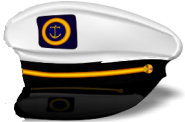ISPS Code : The 9/11 After Effect
The biggest challenge the world is facing today is fighting terrorism. There have been many events in the history showing terrorist attacks at different parts of the world in different forms. But the most gruesome of all – September 11 terrorist attack on the twin towers proved that the international security was on stake.
Since sea is the easiest way to approach to any international territory, International Maritime Organisation (IMO) under SOLAS convention chapter IX-2 developed The International Ship and Port facility Security code – The ISPS code for safety of ships, ports, seafarers and government agencies.
The ISPS code was implemented by IMO on July 1st 2004 as the comprehensive set of measure for international security by prescribing responsibilities to government authority, port authority, shipping companies and seafarers.
It applies to the ships doing international voyages which include passenger ships & cargo ships of 500 GT and above.
Main Aim of ISPS code
- To control the access of unauthorized person on board and inside any port.
- To monitor the activity of people and cargo operation. To detect the different security threats on board vessel and in port and implement measure as per the situation.
- To provide security level to the ship and derive various duties and functions in different security level.
- To build and implement roles and responsibilities for port state officer and on board officers to tackle maritime security threat at international level.
- To collect data from all over the world concerning security threats and results to tackle the same.
ISPS Code for Vessels Includes :
Company Security Officer ( CSO )
CSO is a company appointed person who is responsible for the ship security assessment and for on board survey to confirm the development and implementation of ship security plan as per ISPS code. If any deficiency occurs, CSO is responsible to deal with all the non-conformities and to modify SSP as per the deficiency.
Ship Security Officer ( SSO )
SSO is the in charge of security of the vessel on board and responsible for the other entire crew member to carry out duties for ship security as per ISPS code. SSO is responsible for carrying out frequent drills for ISPS Code as per SSP.
Ship Security Plan ( SSP )
It is a plan kept on board vessel mentioning the duty of crew members at different security levels and the do’s and don’ts at different type of security threats. SSO is responsible under CSO to implement ship security plan onboard vessel.
Ship Security Alert System
Different types of security equipment are kept on board which includes metal detector for checking the person entering the vessel. From July 2004, most of the ship has installed Ship Security Alert System (SSAS) as per ISPS norms which does not sound on ship but alarms the shore authority about the security threat.
Implementing Security Level
It’s the responsibility of SSO to implement the security level on board complying with the security level set by the local government authorities. Also a continuous response is to be made to Port state when security level is level 3.
ISPS Code for Port Facilities Includes
Port facility Security Officer ( PFSO )
PFSO is Government appointed officer responsible for implementing PFSP and to derive security levels for port and vessel berthing at their jetty. He is responsible to conduct port facility security assessment.
Port Facility Security Plan ( PFSP )
It includes the plans and action to be taken at different security levels. Roles and responsibilities are included in PFSP. Action to be taken at the time of any security breach is described in PFSP.
Security Equipments
Minimum security equipment like scanner and metal detector etc must be available at all time with port facility to avoid breach of security inside the port.
Implementing Security Level
Security levels are implemented by port authority under the consult of local government authority. The security level adopted for port facility must be informed to vessel administration for cooperative measures.
marineinsight.com
